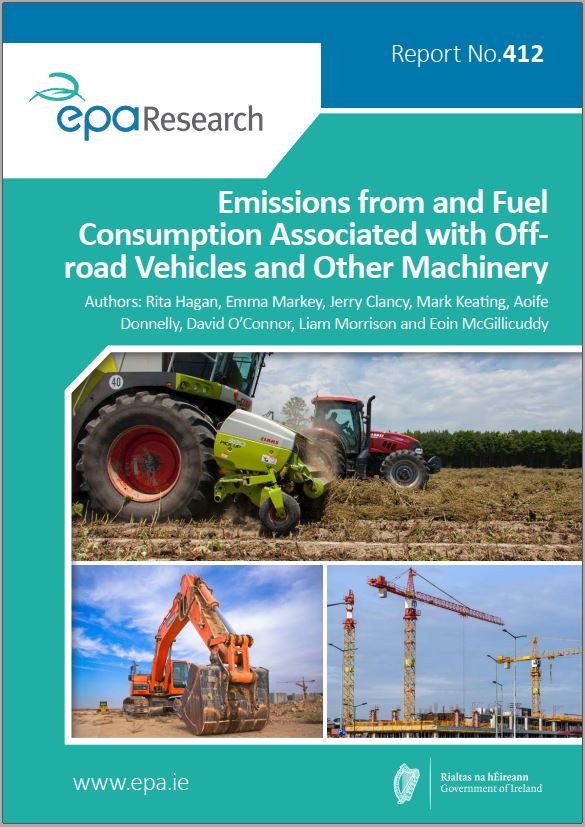Authors: Rita Hagan, Emma Markey, Jerry Clancy, Mark Keating, Aoife Donnelly, David O’Connor, Liam Morrison and Eoin McGillicuddy
Summary: Non-road mobile machinery (NRMM) is a large category that until recently had not been widely researched in terms of its contribution of exhaust emissions to overall air pollution. The emissions from NRMM contribute significantly to air pollution. To lower emissions from NRMM and improve air quality, it is recommended that more data are collected from sectors such as rail, construction, and aviation, and from Transport Infrastructure Ireland. This research used the bottom-up approach of contacting NRMM owners and data holders to request data about their NRMM fleet and its fuel use.

Watch the project highlights video
Non-road mobile machinery (NRMM) is a large category that until recently had not been widely researched in terms of its contribution of exhaust emissions to overall air pollution. The emissions from NRMM contribute significantly to air pollution by emitting carbon monoxide (CO), carbon dioxide (CO2), hydrocarbons (HCs), nitrogen oxides (NOx), sulfur oxides (SOx) and particulate matter (PM). The lack of uniformity of NRMM and the fact that they are used in many and varied sectors, ranging from large-scale machines used in the construction sector to smaller handheld machines used in private gardens, render it difficult to form a full understanding of the number of these machines currently in operation in Ireland and their contribution to overall emissions. As there is no legal requirement to report NRMM emissions or fuel type and use at the national level, data collection currently relies on the data holder’s goodwill. Calculations using national figures show that to gain better understanding of pollutants emitted by NRMM, receiving detailed usage information from data holders is required to improve inventory accuracy.
To lower emissions from NRMM and improve air quality, it is recommended that more data are collected from sectors such as rail, construction, and aviation, and from Transport Infrastructure Ireland. A further recommendation is that new data fields should be added to the annual business energy use survey carried out by the Central Statistics Office (CSO) and to the Sustainable Energy Authority of Ireland (SEAI) public sector energy monitoring and reporting system, to enable the calculation of NRMM emissions data. This will enable the EPA to incorporate data into the national emissions inventory under a separate NRMM category and it will enable the Department of the Environment, Climate and Communications to inform the 5-year sectoral carbon budget and air quality measures. NRMM users can use the data generated to make informed machinery purchase choices, as they would have the knowledge of which low-emission options are available.
An estimation of emissions from NRMM in Ireland had not been conducted previously. This research used the bottom-up approach of contacting NRMM owners and data holders to request data about their NRMM fleet and its fuel use. From the data collected it was possible to attribute 1605.1 kt of CO2 emissions in 2019 to NRMM, for example. It emerged that the requested information is not readily available. It is therefore recommended that documentation containing more detailed information about the machinery be added to the documentation required during purchase, especially when NRMM is purchased for commercial use. Documentation for each machine would be kept in an easily accessible file to facilitate reporting of these data. Establishing strong relationships between the agency responsible for collecting the data and the data holders would further aid the collecting of data and the compiling of NRMM emissions inventories.
https://www.epa.ie/media/epa-2020/research/epa-funded-research/Report-cover-412.jpg